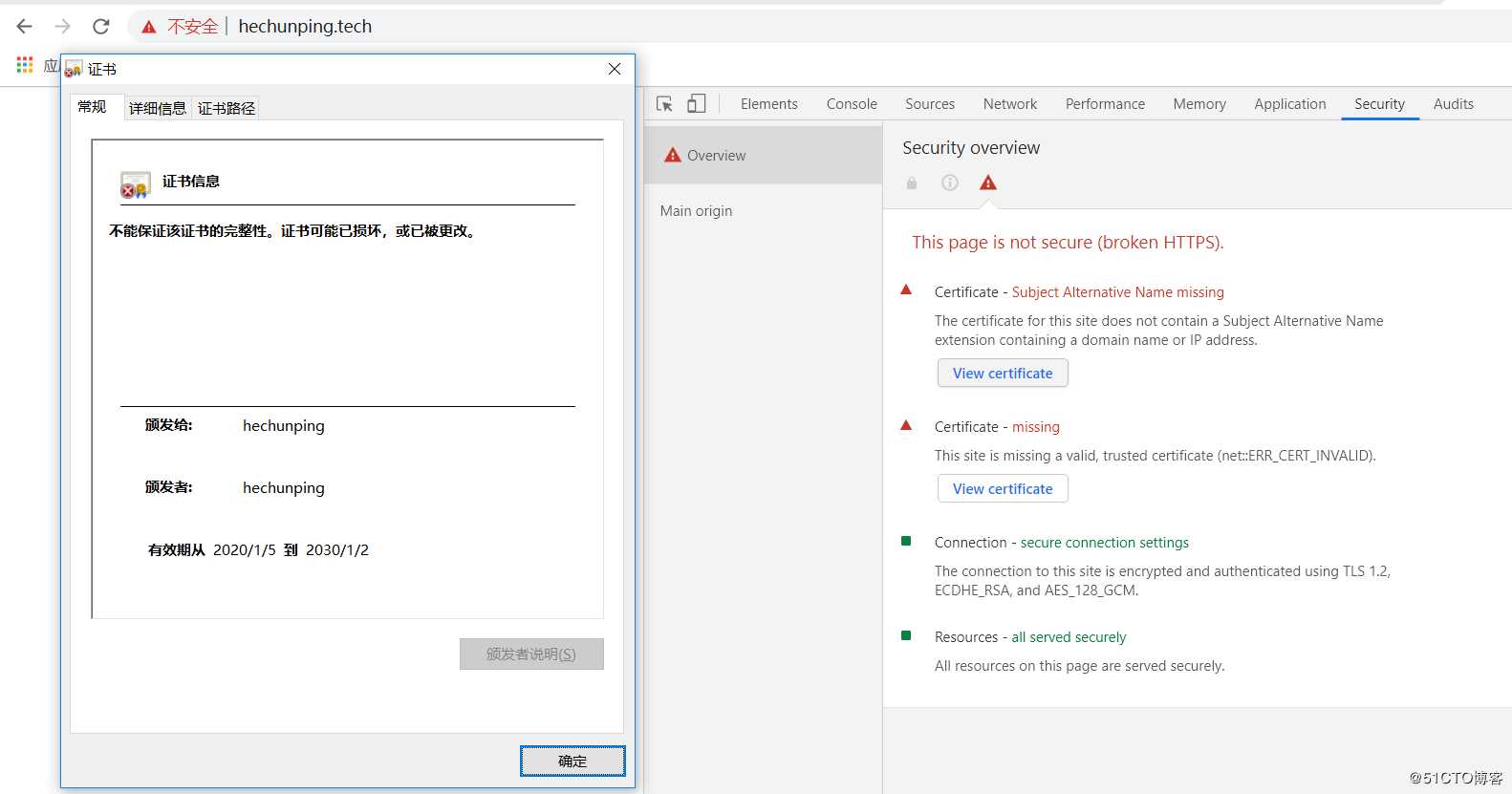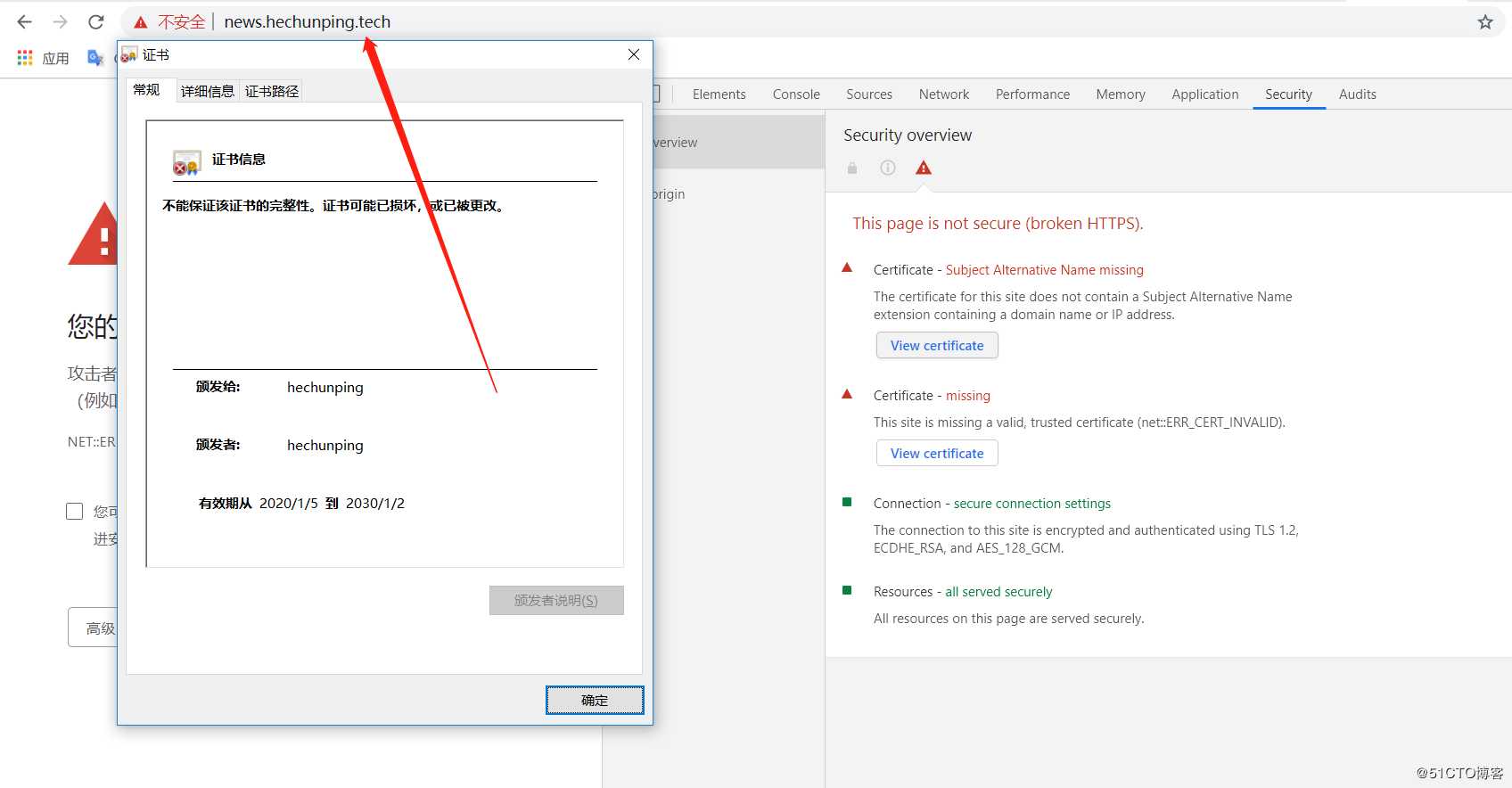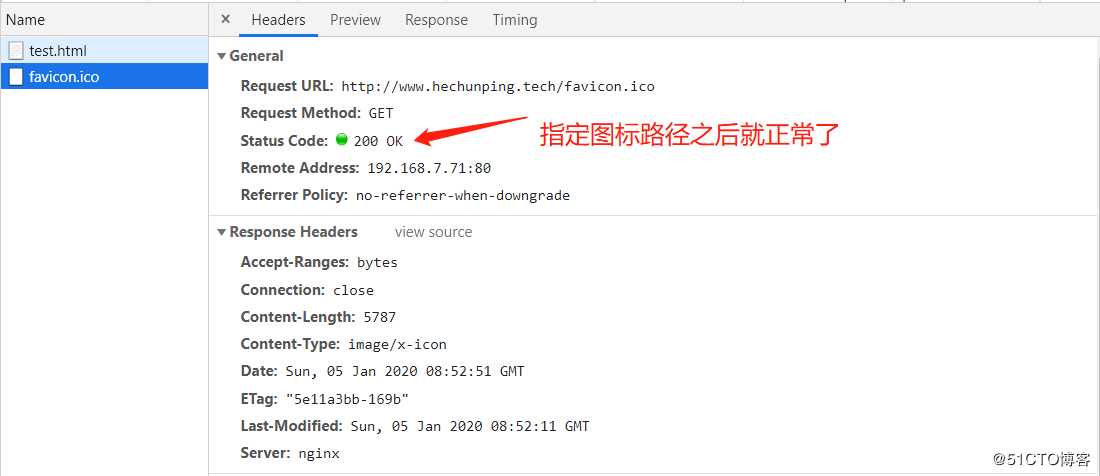在编译的时候需要添加--with-http_stub_status_module参数
配置案例:
[root@CentOS7-01 ~]#cat /apps/nginx/conf/vhosts/pc.conf
server {
listen 80;
server_name www.hechunping.tech;
location /nginx_status {
stub_status;
allow 192.168.7.0/24;
allow 127.0.0.1;
deny all;
}
}
[root@CentOS7-01 ~]#systemctl reload nginx
访问测试
[root@CentOS7-01 ~]#curl www.hechunping.tech/nginx_status
Active connections: 1
server accepts handled requests
32 32 36 #这三个数字分别对应accepts,handled,requests三个值
Reading: 0 Writing: 1 Waiting: 0
相关解释:
Active connections: 当前处于活动状态的客户端连接数,包括连接等待空闲连接数。
accepts: 统计总值,Nginx?启动后已经接受的客户端请求的总数。
handled: 统计总值,Nginx?启动后已经处理完成的客户端请求的总数,通常等于accepts,除?有因worker_connections限制等被拒绝的连接。
requests:统计总值,Nginx?启动后客户端发来的总的请求数。
Reading: 当前状态,正在读取客户端请求报??部的连接的连接数。
Writing: 当前状态,正在向客户端发送响应报?过程中的连接数。
Waiting: 当前状态,正在等待客户端发出请求的空闲连接数,开启 keep-alive的情况下,这个值等于 active – (reading+writing)。第三模块是对nginx的功能扩展,第三?模块需要在编译安装Nginx的时候使?参数--add-module=PATH指定路径添加,有的模块是由公司的开发?员针对业务需求定制开发的,有的模块是开源爱好者开发好之后上传到github进?开源的模块,nginx?持第三?模块需要从源码重新编译?持,?如开源的echo模块 https://github.com/openresty/echo-nginx-module
配置案例
[root@CentOS7-01 ~]#cat /apps/nginx/conf/vhosts/pc.conf
server {
listen 80;
server_name www.hechunping.tech;
location /pc {
echo_sleep 1;
echo "this is pc directory";
}
}
[root@CentOS7-01 ~]#nginx -t
nginx: [emerg] unknown directive "echo_sleep" in /apps/nginx/conf/vhosts/pc.conf:5
nginx: configuration file /apps/nginx/conf/nginx.conf test failed
[root@CentOS7-01 ~]#yum install git -y
[root@CentOS7-01 ~]#git clone https://github.com/openresty/echo-nginx-module.git
[root@CentOS7-01 ~]#systemctl stop nginx
[root@CentOS7-01 ~]#cd nginx-1.16.1/
[root@CentOS7-01 nginx-1.16.1]#./configure --prefix=/apps/nginx --with-http_ssl_module --with-http_v2_module --with-http_realip_module --with-http_addition_module --with-http_image_filter_module --with-http_geoip_module --with-http_gunzip_module --with-http_stub_status_module --with-http_gzip_static_module --with-pcre --with-stream --with-stream_ssl_module --with-stream_realip_module --add-module=/usr/local/src/echo-nginx-module
[root@CentOS7-01 nginx-1.16.1]#make -j lscpu |awk ‘NR==4{print $2}‘ && make install
# 再次检测语法,正常
[root@CentOS7-01 nginx-1.16.1]#nginx -t
nginx: the configuration file /apps/nginx/conf/nginx.conf syntax is ok
nginx: configuration file /apps/nginx/conf/nginx.conf test is successful
[root@CentOS7-01 nginx-1.16.1]#nginx -V
nginx version: nginx/1.16.1
built by gcc 4.8.5 20150623 (Red Hat 4.8.5-39) (GCC)
built with OpenSSL 1.0.2k-fips 26 Jan 2017
TLS SNI support enabled
configure arguments: --prefix=/apps/nginx --with-http_ssl_module --with-http_v2_module --with-http_realip_module --with-http_addition_module --with-http_image_filter_module --with-http_geoip_module --with-http_gunzip_module --with-http_stub_status_module --with-http_gzip_static_module --with-pcre --with-stream --with-stream_ssl_module --with-stream_realip_module --add-module=/usr/local/src/echo-nginx-module
[root@CentOS7-01 nginx-1.16.1]#systemctl start nginx
# 访问测试,echo模块已经可用
[root@CentOS7-01 nginx-1.16.1]#curl www.hechunping.tech/pc
this is pc directorynginx的变量可以在配置?件中引?,作为功能判断或者?志等场景使?,变量可以分为内置变量和?定义变量,
内置变量是由nginx模块?带,通过变量可以获取到众多的与客?端访问相关的值。可以通过上面的echo模块输出,下面的变量都是参照如下配置文件
[root@CentOS7-01 nginx-1.16.1]#cat /apps/nginx/conf/vhosts/pc.conf
server {
listen 80;
server_name www.hechunping.tech;
location /pc {
echo $remote_addr;
}
}
$remote_addr; #存放了客户端的地址,注意是客户端的公?IP,也就是?家?访问?个?站,则会显?为路由器的公?IP。
[root@CentOS7-01 nginx-1.16.1]#curl www.hechunping.tech/pc
127.0.0.1
$args; #变量中存放了URL中的指令,例如http://www.hechunping.tech/pc/index.do?id=20200105
[root@CentOS7-01 ~]#curl http://www.hechunping.tech/pc/index.do?id=20200105
id=20200105
$document_root; #保存了针对当前资源的请求的系统根?录
[root@CentOS7-01 ~]#curl http://www.hechunping.tech/pc
/apps/nginx/html
$document_uri; #保存了当前请求中不包含指令的URI,注意是不包含请求的指令,比如
[root@CentOS7-01 ~]#curl http://www.hechunping.tech/pc/index.do?id=20200105
/pc/index.do
$host; #存放了请求的host名称。
[root@CentOS7-01 ~]#curl http://www.hechunping.tech/pc
www.hechunping.tech
$http_user_agent; #客?端浏览器的详细信息
[root@CentOS7-01 ~]#curl http://www.hechunping.tech/pc
curl/7.29.0
$http_cookie; #客?端的cookie信息。
$limit_rate; #如果nginx服务器使?limit_rate配置了显??络速率,则会显?,如果没有设置,则显?0。
[root@CentOS7-01 ~]#curl http://www.hechunping.tech/pc
0
$remote_port; #客?端请求Nginx服务器时随机打开的端?,这是每个客?端??的端?。
[root@CentOS7-01 ~]#curl http://www.hechunping.tech/pc
37848
[root@CentOS7-01 ~]#curl http://www.hechunping.tech/pc
37850
$remote_user; #已经经过Auth Basic Module验证的??名。
$request_body_file; #做反向代理时发给后端服务器的本地资源的名称。
$request_method; #请求资源的?式,GET/PUT/DELETE等
[root@CentOS7-01 ~]#curl http://www.hechunping.tech/pc
GET
$request_filename; #当前请求的资源?件的路径名称,由root或alias指令与URI请求?成的?件绝对路径,如
[root@CentOS7-01 ~]#curl http://www.hechunping.tech/pc/index.html
/apps/nginx/html/pc/index.html
$request_uri; #包含请求参数的原始URI,不包含主机名,如
[root@CentOS7-01 ~]#curl http://www.hechunping.tech/pc/index.do?id=20200105
/pc/index.do?id=20200105
$scheme; #请求的协议,如ftp,https,http等。
[root@CentOS7-01 ~]#curl http://www.hechunping.tech/pc
http
$server_protocol; #保存了客?端请求资源使?的协议的版本,如HTTP/1.0,HTTP/1.1,HTTP/2.0等。
[root@CentOS7-01 ~]#curl http://www.hechunping.tech/pc
HTTP/1.1
$server_addr; #保存了服务器的IP地址。
[root@CentOS7-01 ~]#curl http://www.hechunping.tech/pc
127.0.0.1
$server_name; #请求的服务器的主机名。
[root@CentOS7-01 ~]#curl http://www.hechunping.tech/pc
www.hechunping.tech
$server_port; #请求的服务器的端?号。
[root@CentOS7-01 ~]#curl http://www.hechunping.tech/pc
80假如需要?定义变量名称和值,使?指令"set $variable value;",语法如下
Syntax: set $variable value;
Default: —
Context: server, location, if
配置
[root@CentOS7-01 ~]#cat /apps/nginx/conf/vhosts/pc.conf
server {
listen 80;
server_name www.hechunping.tech;
location /pc {
set $name $server_name;
echo $name;
set $my_port $server_port;
echo $my_port;
}
}
[root@CentOS7-01 ~]#!s
systemctl restart nginx
访问测试
[root@CentOS7-01 ~]#curl http://www.hechunping.tech/pc
www.hechunping.tech
80访问?志是记录客户端即?户的具体请求内容信息,全局配置模块中的error_log是记录nginx服务器运?时的?志
保存路径和记录?志的level,因此有着本质的区别,?且Nginx的错误?志?般只有?个,但是访问?志可以在不
同server中定义多个,定义?个?志需要使?access_log指定?志的保存路径,使?log_format指定?志的格式,
格式中定义要保存的具体?志内容。如果是要保留?志的原格式,只是添加相应的?志内容,则配置如下:
log_format www.hechunping.tech ‘$remote_addr - $remote_user [$time_local] "$request" ‘
‘$status $body_bytes_sent "$http_referer" ‘
‘"$http_user_agent" "$http_x_forwarded_for"‘
‘$server_name:$server_port‘;
access_log /data/nginx/logs/www.hechunping.tech/access.log www.hechunping.tech;
[root@CentOS7-01 ~]#nginx -t
nginx: the configuration file /apps/nginx/conf/nginx.conf syntax is ok
nginx: configuration file /apps/nginx/conf/nginx.conf test is successful
[root@CentOS7-01 ~]#systemctl reload nginx
[root@CentOS7-01 ~]#tail -f /data/nginx/logs/www.hechunping.tech/access.log
192.168.7.1 - - [05/Jan/2020:14:58:47 +0800] "GET /pc/ HTTP/1.1" 200 7 "-" "Mozilla/5.0 (Windows NT 10.0; Win64; x64) AppleWebKit/537.36 (KHTML, like Gecko) Chrome/77.0.3865.120 Safari/537.36" "-"www.hechunping.tech:80Nginx 的默认访问?志记录内容相对?较单?,默认的格式也不?便后期做?志统计分析,?产环境中通常将nginx?志转换为json?志,然后配合使?ELK做?志收集-统计-分析。
log_format access_json ‘{"@timestamp":"$time_iso8601",‘
‘"host":"$server_addr",‘
‘"clientip":"$remote_addr",‘
‘"size":$body_bytes_sent,‘
‘"responsetime":$request_time,‘
‘"upstreamtime":"$upstream_response_time",‘
‘"upstreamhost":"$upstream_addr",‘
‘"http_host":"$host",‘
‘"uri":"$uri",‘
‘"domain":"$host",‘
‘"xff":"$http_x_forwarded_for",‘
‘"referer":"$http_referer",‘
‘"tcp_xff":"$proxy_protocol_addr",‘
‘"http_user_agent":"$http_user_agent",‘
‘"status":"$status"}‘;
access_log /data/nginx/logs/www.hechunping.tech/access.log access_json;
[root@CentOS7-01 ~]#tail -f /data/nginx/logs/www.hechunping.tech/access.log
{"@timestamp":"2020-01-05T15:04:16+08:00","host":"192.168.7.71","clientip":"192.168.7.1","size":7,"responsetime":0.000,"upstreamtime":"-","upstreamhost":"-","http_host":"www.hechunping.tech","uri":"/pc/index.html","domain":"www.hechunping.tech","xff":"-","referer":"-","tcp_xff":"","http_user_agent":"Mozilla/5.0 (Windows NT 10.0; Win64; x64) AppleWebKit/537.36 (KHTML, like Gecko) Chrome/77.0.3865.120 Safari/537.36","status":"200"}[root@CentOS7-01 ~]#cat nginx_json.py
#!/usr/bin/env python
#coding:utf-8
status_200 = []
status_404 = []
with open("access_json.log") as f:
for line in f.readlines():
line = eval(line)
if line.get("status") == "200":
status_200.append(line.get)
elif line.get("status") == "404":
status_404.append(line.get)
else:
print("状态码 ERROR")
f.close()
print "状态码为200的有-->:",len(status_200)
print "状态码为404的有-->:",len(status_404)
[root@CentOS7-01 ~]#python nginx_json.py
...
状态码 ERROR
状态码为200的有-->: 403428
状态码为404的有-->: 125712Nginx?持对指定类型的?件进?压缩然后再传输给客?端,?且压缩还可以设置压缩?例,压缩后的?件??将?源?件显著变?,这样有助于降低出?带宽的利?率,降低企业的IT?出,不过会占?相应的CPU资源。
Nginx对?件的压缩功能是依赖于模块ngx_http_gzip_module,官??档: https://nginx.org/en/docs/http/ngx_http_gzip_module.html, 配置指令如下:
gzip on | off; #启?或禁?gzip压缩,默认关闭
gzip_comp_level level; #压缩?由低到?从1到9,默认为1
gzip_disable "MSIE [1-6]\."; #禁?IE6 gzip功能
gzip_min_length 1k; #gzip压缩的最??件,?于设置值的?件将不会压缩
gzip_http_version 1.0 | 1.1; #启?压缩功能时,协议的最?版本,默认HTTP/1.1
gzip_buffers number size; #指定Nginx服务需要向服务器申请的缓存空间的个数*??,默认32 4k|16 8k;
gzip_types mime-type ...; #指明仅对哪些类型的资源执?压缩操作;默认为gzip_types text/html,不?显?指定,否则出错
gzip_vary on | off; #如果启?压缩,是否在响应报??部插?"Vary: Accept-Encoding"
配置案例
gzip on;
gzip_comp_level 5;
gzip_min_length 1k; gzip_types text/plain application/javascript application/x-javascript text/cssapplication/xml text/javascript application/x-httpd-php image/jpeg image/gif image/png;
gzip_vary on;
[root@CentOS7-01 ~]#cat /apps/nginx/conf/vhosts/pc.conf
server {
listen 80;
server_name www.hechunping.tech;
location /pc {
root html;
}
}
[root@CentOS7-01 ~]#ll /apps/nginx/html/pc/test.html -h
-rw-r--r-- 1 nginx nginx 1.7M Jan 5 16:01 /apps/nginx/html/pc/test.html #使用该文件进行压缩测试
访问测试,压缩后的大小

nginx的https功能基于模块ngx_http_ssl_module实现,因此如果是编译安装的nginx要使?参数--with-http_ssl_module开启ssl功能,但是作为nginx的核?功能,yum安装的nginx默认就是开启的。
官??档: https://nginx.org/en/docs/http/ngx_http_ssl_module.html
配置参数如下:
ssl on | off; #为指定的虚拟主机配置是否启?ssl功能,此功能在1.15.0废弃,使?listen [ssl]替代。
ssl_certificate /path/to/file; #当前虚拟主机使?使?的公钥?件,?般是crt?件
ssl_certificate_key /path/to/file; #当前虚拟主机使?的私钥?件,?般是key?件
ssl_protocols [SSLv2] [SSLv3] [TLSv1] [TLSv1.1] [TLSv1.2]; #?持ssl协议版本,早期为ssl,现在是TSL,默认为后三个
ssl_session_cache off | none | [builtin[:size]] [shared:name:size]; #配置ssl缓存
off: 关闭缓存
none: 通知客?端?持ssl session cache,但实际不?持
builtin[:size]: 使?OpenSSL内建缓存,为每worker进程私有
[shared:name:size]: 在各worker之间使??个共享的缓存,需要定义?个缓存名称和缓存空间??,?兆可以存储4000个会话信息,多个虚拟主机可以使?相同的缓存名称。
ssl_session_timeout time; #客?端连接可以复?ssl session cache中缓存的有效时?,默认5m# 自签名CA证书
[root@CentOS7-01 ~]#cd /apps/nginx/
[root@CentOS7-01 nginx]#mkdir certs
[root@CentOS7-01 nginx]#cd certs
[root@CentOS7-01 certs]#openssl req -newkey rsa:4096 -nodes -sha256 -keyout ca.key -x509 -days 3650 -out ca.crt
Generating a 4096 bit RSA private key
......++
...................++
writing new private key to ‘ca.key‘
-----
You are about to be asked to enter information that will be incorporated
into your certificate request.
What you are about to enter is what is called a Distinguished Name or a DN.
There are quite a few fields but you can leave some blank
For some fields there will be a default value,
If you enter ‘.‘, the field will be left blank.
-----
Country Name (2 letter code) [XX]:CN #国家代码,参看:https://country-code.cl
State or Province Name (full name) []:BeiJing #省份
Locality Name (eg, city) [Default City]:BeiJing #城市名称
Organization Name (eg, company) [Default Company Ltd]:abc #公司名称
Organizational Unit Name (eg, section) []:IT #部门名称
Common Name (eg, your name or your server‘s hostname) []:hechunping #通用名称
Email Address []:742384103@qq.com #邮箱
[root@CentOS7-01 certs]#ls
ca.crt ca.key
# 自制key和csr文件
[root@CentOS7-01 certs]#openssl req -newkey rsa:4096 -nodes -sha256 -keyout www.hechunping.tech.key -out www.hechunping.tech.csr
Generating a 4096 bit RSA private key
...............................................++
........................................................................................++
writing new private key to ‘www.hechunping.tech.key‘
-----
You are about to be asked to enter information that will be incorporated
into your certificate request.
What you are about to enter is what is called a Distinguished Name or a DN.
There are quite a few fields but you can leave some blank
For some fields there will be a default value,
If you enter ‘.‘, the field will be left blank.
-----
Country Name (2 letter code) [XX]:CN
State or Province Name (full name) []:BeiJing
Locality Name (eg, city) [Default City]:BeiJing
Organization Name (eg, company) [Default Company Ltd]:abc
Organizational Unit Name (eg, section) []:IT
Common Name (eg, your name or your server‘s hostname) []:hechunping
Email Address []:742384103@qq.com
Please enter the following ‘extra‘ attributes
to be sent with your certificate request
A challenge password []: #此处为空即可
An optional company name []: #同上
[root@CentOS7-01 certs]#ll
total 16
-rw-r--r-- 1 root root 2090 Jan 5 21:05 ca.crt
-rw-r--r-- 1 root root 3272 Jan 5 21:05 ca.key
-rw-r--r-- 1 root root 1736 Jan 5 21:11 www.hechunping.tech.csr
-rw-r--r-- 1 root root 3272 Jan 5 21:11 www.hechunping.tech.key
# 签发证书
[root@CentOS7-01 certs]#openssl x509 -req -days 3650 -in www.hechunping.tech.csr -CA ca.crt -CAkey ca.key -CAcreateserial -out www.hechunping.tech.crt
Signature ok
subject=/C=CN/ST=BeiJing/L=BeiJing/O=abc/OU=IT/CN=hechunping/emailAddress=742384103@qq.com
Getting CA Private Key
# 验证证书内容
[root@CentOS7-01 certs]#openssl x509 -in www.hechunping.tech.crt -noout -text
Certificate:
Data:
Version: 1 (0x0)
Serial Number:
c6:bd:85:07:5d:3c:bc:54
Signature Algorithm: sha256WithRSAEncryption
Issuer: C=CN, ST=BeiJing, L=BeiJing, O=abc, OU=IT, CN=hechunping/emailAddress=742384103@qq.com
Validity
Not Before: Jan 5 13:13:08 2020 GMT
Not After : Jan 2 13:13:08 2030 GMT
Subject: C=CN, ST=BeiJing, L=BeiJing, O=abc, OU=IT, CN=hechunping/emailAddress=742384103@qq.com
Subject Public Key Info:
Public Key Algorithm: rsaEncryption
Public-Key: (4096 bit)
......[root@CentOS7-01 certs]#cat /apps/nginx/conf/vhosts/pc.conf
server {
listen 80;
listen 443 ssl;
ssl_certificate /apps/nginx/certs/www.hechunping.tech.crt;
ssl_certificate_key /apps/nginx/certs/www.hechunping.tech.key;
ssl_session_cache shared:sslcache:20m;
ssl_session_timeout 10m;
server_name www.hechunping.tech;
location /pc {
root html;
}
}
[root@CentOS7-01 certs]#systemctl reload nginx
访问测试
Nginx?持基于单个IP实现多域名的功能,并且还?持单IP多域名的基础之上实现HTTPS,其实是基于Nginx的SNI(Server Name Indication)功能实现,SNI是为了解决?个Nginx服务器内使??个IP绑定多个域名和证书的功能,其具体功能是客?端在连接到服务器建?SSL链接之前先发送要访问站点的域名(Hostname),这样服务器再根据这个域名返回给客?端?个合适的证书。
# 制作key和csr文件
[root@CentOS7-01 certs]#openssl req -newkey rsa:4096 -nodes -sha256 -keyout news.hechunping.tech.key -out news.hechunping.tech.csr
Generating a 4096 bit RSA private key
.............................................................................++
.....................................................................................................................................................................................................................................................................................................++
writing new private key to ‘news.hechunping.tech.key‘
-----
You are about to be asked to enter information that will be incorporated
into your certificate request.
What you are about to enter is what is called a Distinguished Name or a DN.
There are quite a few fields but you can leave some blank
For some fields there will be a default value,
If you enter ‘.‘, the field will be left blank.
-----
Country Name (2 letter code) [XX]:CN
State or Province Name (full name) []:BeiJing
Locality Name (eg, city) [Default City]:BeiJing
Organization Name (eg, company) [Default Company Ltd]:xyz
Organizational Unit Name (eg, section) []:IT
Common Name (eg, your name or your server‘s hostname) []:hechunping
Email Address []:742384103@qq.com
Please enter the following ‘extra‘ attributes
to be sent with your certificate request
A challenge password []:
An optional company name []:
# 签名证书
[root@CentOS7-01 certs]#openssl x509 -req -days 3650 -in news.hechunping.tech.csr -CA ca.crt -CAkey ca.key -CAcreateserial -out news.hechunping.tech.crt
Signature ok
subject=/C=CN/ST=BeiJing/L=BeiJing/O=xyz/OU=IT/CN=hechunping/emailAddress=742384103@qq.com
Getting CA Private Key
# 验证证书内容
[root@CentOS7-01 certs]#openssl x509 -in news.hechunping.tech.crt -noout -text
Certificate:
Data:
Version: 1 (0x0)
Serial Number:
c6:bd:85:07:5d:3c:bc:55
Signature Algorithm: sha256WithRSAEncryption
Issuer: C=CN, ST=BeiJing, L=BeiJing, O=abc, OU=IT, CN=hechunping/emailAddress=742384103@qq.com
Validity
Not Before: Jan 5 13:52:00 2020 GMT
Not After : Jan 2 13:52:00 2030 GMT
Subject: C=CN, ST=BeiJing, L=BeiJing, O=xyz, OU=IT, CN=hechunping/emailAddress=742384103@qq.com
Subject Public Key Info:
Public Key Algorithm: rsaEncryption
Public-Key: (4096 bit)
......
# nginx配置证书
[root@CentOS7-01 certs]#cat /apps/nginx/conf/vhosts/news.conf
server {
listen 80;
listen 443 ssl;
ssl_certificate /apps/nginx/certs/news.hechunping.tech.crt;
ssl_certificate_key /apps/nginx/certs/news.hechunping.tech.key;
ssl_session_cache shared:sslcache:20m;
ssl_session_timeout 10m;
server_name news.hechunping.tech;
location /pc {
root html;
}
}
[root@CentOS7-01 certs]#systemctl reload nginx
# 访问测试
favicon.ico ?件是浏览器收藏?址时显?的图标,当客?端使?浏览器问??时,浏览器会??主动发起请求获取??的favicon.ico?件,但是当浏览器请求的favicon.ico?件不存在时,服务器会记录404?志,?且浏览器也会显?404报错。
解决方法
将图标保存到指定的目录
[root@CentOS7-01 ~]#cat /apps/nginx/conf/vhosts/pc.conf
server {
listen 80;
server_name www.hechunping.tech;
location = /favicon.ico {
root html/image;
}
location /pc {
root html;
}
}
[root@CentOS7-01 ~]#systemctl reload nginx

更改nginx源码信息,将nginx服务版本号更改为HCPWS/1.1并重新编译nginx
[root@CentOS7-01 nginx-1.16.1]#sed -ir ‘s#Server: nginx#Server: HCPWS/1.1#‘ /root/nginx-1.16.1/src/http/ngx_http_header_filter_module.c
[root@CentOS7-01 nginx-1.16.1]#nginx -V
nginx version: nginx/1.16.1
built by gcc 4.8.5 20150623 (Red Hat 4.8.5-39) (GCC)
built with OpenSSL 1.0.2k-fips 26 Jan 2017
TLS SNI support enabled
configure arguments: --prefix=/apps/nginx --with-http_ssl_module --with-http_v2_module --with-http_realip_module --with-http_addition_module --with-http_image_filter_module --with-http_geoip_module --with-http_gunzip_module --with-http_stub_status_module --with-http_gzip_static_module --with-pcre --with-stream --with-stream_ssl_module --with-stream_realip_module --add-module=/usr/local/src/echo-nginx-module
[root@CentOS7-01 nginx-1.16.1]#./configure --prefix=/apps/nginx --with-http_ssl_module --with-http_v2_module --with-http_realip_module --with-http_addition_module --with-http_image_filter_module --with-http_geoip_module --with-http_gunzip_module --with-http_stub_status_module --with-http_gzip_static_module --with-pcre --with-stream --with-stream_ssl_module --with-stream_realip_module --add-module=/usr/local/src/echo-nginx-module
[root@CentOS7-01 nginx-1.16.1]#make -j lscpu | awk ‘NR==4{print $2}‘ && make install
[root@CentOS7-01 nginx-1.16.1]#systemctl restart nginx
访问测试
?脏出?(英语:Heartbleed),也简称为??漏洞,是?个出现在加密程序库OpenSSL的安全漏洞,该程序库?泛?于实现互联?的传输层安全(TLS)协议。它于2012年被引?了软件中,2014年4??次向公众披露。只要使?的是存在缺陷的OpenSSL实例,?论是服务器还是客?端,都可能因此?受到***。此问题的原因是在实现TLS的?跳扩展时没有对输?进?适当验证(缺少边界检查),因此漏洞的名称来源于“?跳”(heartbeat)。该程序错误属于缓冲区过读,即可以读取的数据?应该允许读取的还多。
升级步骤
1)查看当前的Openssl版本
2)下载OpenSSL源码包并解压
[root@CentOS7-01 nginx-1.16.1]#wget -P /usr/local/src/ https://www.openssl.org/source/openssl-1.1.1d.tar.gz
[root@CentOS7-01 nginx-1.16.1]#tar xf /usr/local/src/openssl-1.1.1d.tar.gz
3)编译安装nginx并指定新版本OpenSSL路径
[root@CentOS7-01 nginx-1.16.1]#nginx -V
nginx version: nginx/1.16.1
built by gcc 4.8.5 20150623 (Red Hat 4.8.5-39) (GCC)
built with OpenSSL 1.0.2k-fips 26 Jan 2017
TLS SNI support enabled
configure arguments: --prefix=/apps/nginx --with-http_ssl_module --with-http_v2_module --with-http_realip_module --with-http_addition_module --with-http_image_filter_module --with-http_geoip_module --with-http_gunzip_module --with-http_stub_status_module --with-http_gzip_static_module --with-pcre --with-stream --with-stream_ssl_module --with-stream_realip_module --add-module=/usr/local/src/echo-nginx-module
[root@CentOS7-01 nginx-1.16.1]#./configure --prefix=/apps/nginx --with-http_ssl_module --with-http_v2_module --with-http_realip_module --with-http_addition_module --with-http_image_filter_module --with-http_geoip_module --with-http_gunzip_module --with-http_stub_status_module --with-http_gzip_static_module --with-pcre --with-stream --with-stream_ssl_module --with-stream_realip_module --add-module=/usr/local/src/echo-nginx-module --with-openssl=./openssl-1.1.1d
[root@CentOS7-01 nginx-1.16.1]#make -j lscpu |awk ‘NR==4{print $2}‘ && make install
[root@CentOS7-01 nginx-1.16.1]#systemctl restart nginx
验证
原文:https://blog.51cto.com/hexiaoshuai/2464527